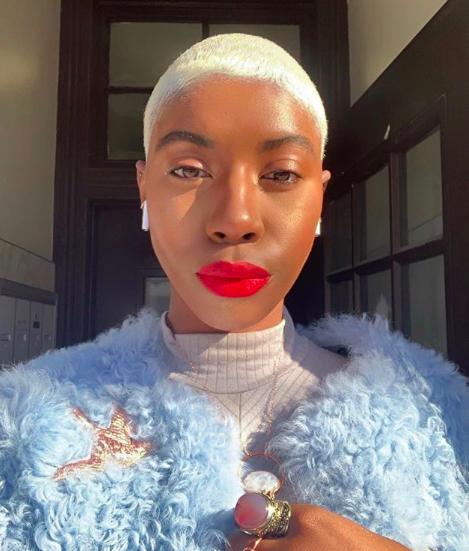Netflix's Dating Around: Navigating Love Realistically
Dating Around is the type of show that takes time to reel you in. The premise, its cast members, the editing — almost everything about Netflix’s new reality dating show slips the mind at first, creating almost no immediate impression. The first episode of the show introduces a mildly attractive guy named Luke from New York City who works in real estate. Luke then goes on dates with five attractive women at a sultry restaurant. The episode’s “biggest” reveal comes at the end, when Luke makes the decision on which of the five women he wants to take on a second date. And that is all.
via News of Orange
Dramatic elimination ceremonies are non-existent. There are no confessional interviews where the cast spills the beans about their feelings as prompted by unseen producers. There is no host or voice-overs. No one bungee jumps off the side of a bridge, gets into a helicopter, or stares down the direct competition of suitors across the table. It’s just an ordinary person going on several first dates, and then deciding whether or not they want to give people the time of day again. This is exactly why, after that first episode, I wasn’t sure what to make of it, other than, “Oh, this is quite easy going and cool.”
By the third episode, I had decided it was deceptively appealing. By episode four, I realized I’d forgotten to do my reading for my night class.
At that very moment, the obsessive secret of Dating Around was apparent: It acknowledges how much romance-based reality television has been left on the back burner — how many forms of the human experience are rarely highlighted on The Bachelor, 90 Day Fiancé or Married at First Sight — and it encapsulates what those other shows typically disregard. Of course, Dating Around still has limitations in a way. Everything is set in New York, including very New York conversations about how expensive things are, how long everyone has lived in the city, and real estate. The show takes advantage of the gaps other dating shows don’t consider. One out of the season’s six episodes features a straight, white millennial man, dating women. A majority of the singles that are looking for love are people of color; two of the episodes are about queer people. Episode four, which happens to be my favorite, is about a widower in his 60s ( named Leonard)— a private eye at that! — who insists on telling a horrible ( but cute) joke about a frog on many of his dates.
via Distractify
The wide variety of the cast is effective for Dating Around, and not just because it makes the show an effortless fit within Netflix’s wide developing genre of reality shows about leading a good life and finding happiness. The variety is good because it makes the show more dynamic. Even though the episodes follow the same format dinner, drinks, and potential after- dinner drinks, flowing between five different dates. The tone and cadence of each are unique. The intimacies and pressures are different. The date with a young gay woman who makes a joke about scissoring emotes many different feelings than an older man talking about his deceased wife while getting to know someone else.
via @MilaKoren
Both of these are different from the date with a young straight woman, who abruptly ends a date after deciding the man across from her was not a good fit. She sits by herself at the bar for a minute and sighs, “My God, I’m going to go home and masturbate.”
Sarah being bored AF on her date. via Thrillist
Dating Around also surprisingly escapes one of the biggest pitfalls of its cinematic and highly-produced look. A lot of the visuals remind me of The Hills tradition of reality shows: expeditiously edited sequences that look like editorial fashion shoots and dialogue chopped into meaningful arcs, bookended by music that saturates the mood onto otherwise customary footage. The risk is like tumbling into a remarkable valley where its reality realism makes everything seem outlandish and weird. The bulk of the date footage is unblemished by lens flare or musical inserts, leaving the audience in unmediated awkwardness of a guy who berates his date about her divorce or a young woman who tells her date how to chew his food. It also leaves audiences with a convincing sense of a tangible spark when, say, one of the guys makes his date burst in laughter.
In the blossoming genre of light-hearted reality shows, Dating Around is a series where people can date one another without the perilous force of feeling like they have to commit to someone, and where none of the cast members are present provoking a producer to think they might fight someone. There’s not even an inkling to be made that these people will fall madly in love with one another. Dating Around only asks for the potential that people will date, and possibly meet up again. Given the state of high-risk romance shows, that may be enough to pass for “enjoyable.”
The vehemently low stakes are weaknesses as well. Dating Around’s main confliction is, “Which of these five people will land the second date ?” but this also indicates that we’ll never see these people again or get to learn what happened after the cameras stopped rolling. An even more captivating version of Dating Around would give an update episode of the couples on where they’re at in their life, or a follow up on how things went past the second date. There’s nothing to pull you from one episode to the next, no personalities that present themselves again, and no significant attachments to specific people.
Ultimately, we have to enjoy what we have: a not-quite-as-addictive dating show, which guarantees the fact that when you finish an episode, you don’t feel incomplete or gut wrenched over someone’s romantic train wreck. It is a glimpse into people’s lives, many different backgrounds, and orientations as they embark on many first dates. If you watch it and you discover that it’s the first reality show you’ve seen that portrays two women talking about whether they’re attracted to stem and butch partners or depicts a glistening, uber sexy date between 60-year-olds, or a blunt conversation between two gay men about their favorite sex positions? It’s something worthwhile.
Cover image via Decider




